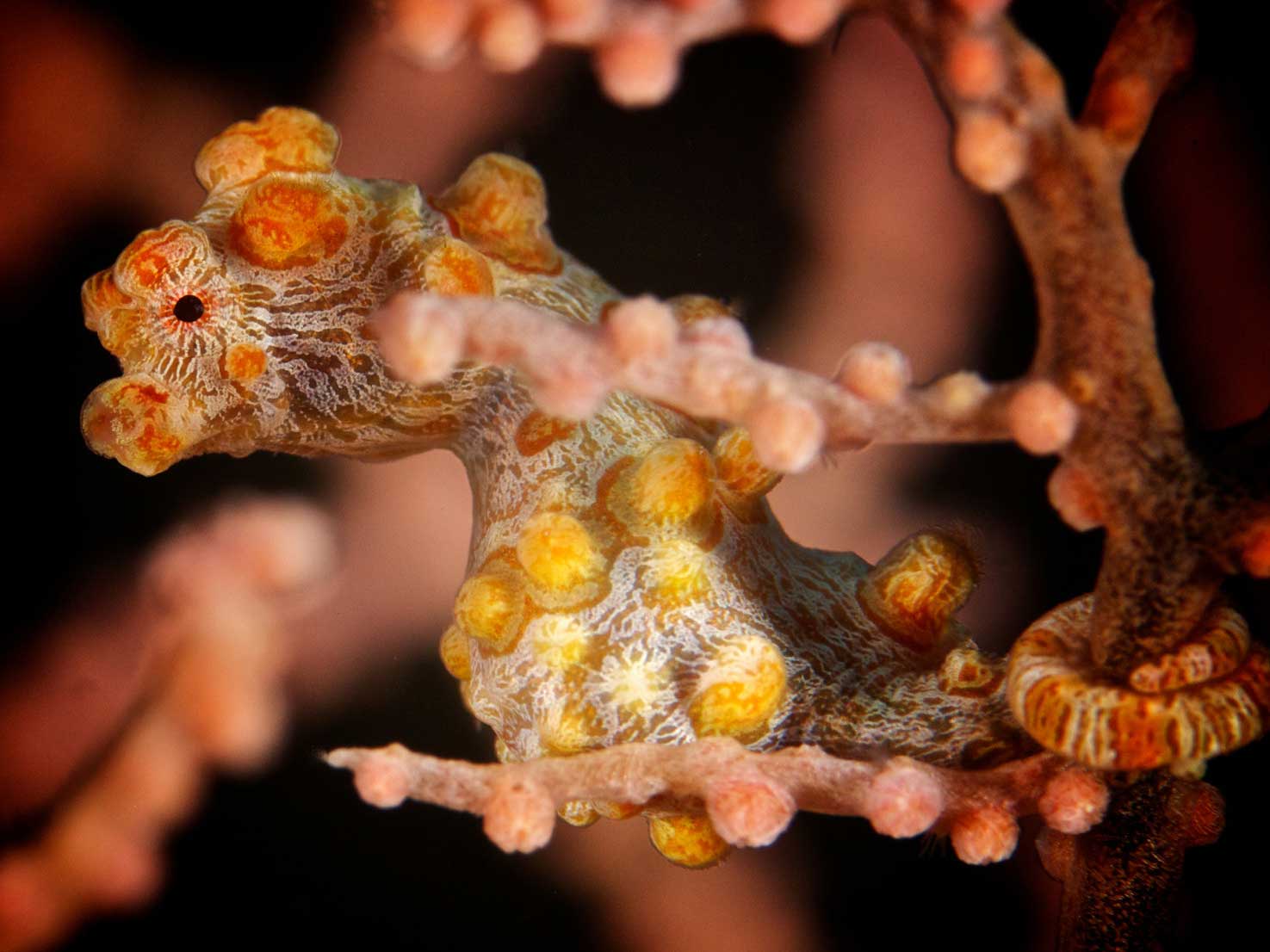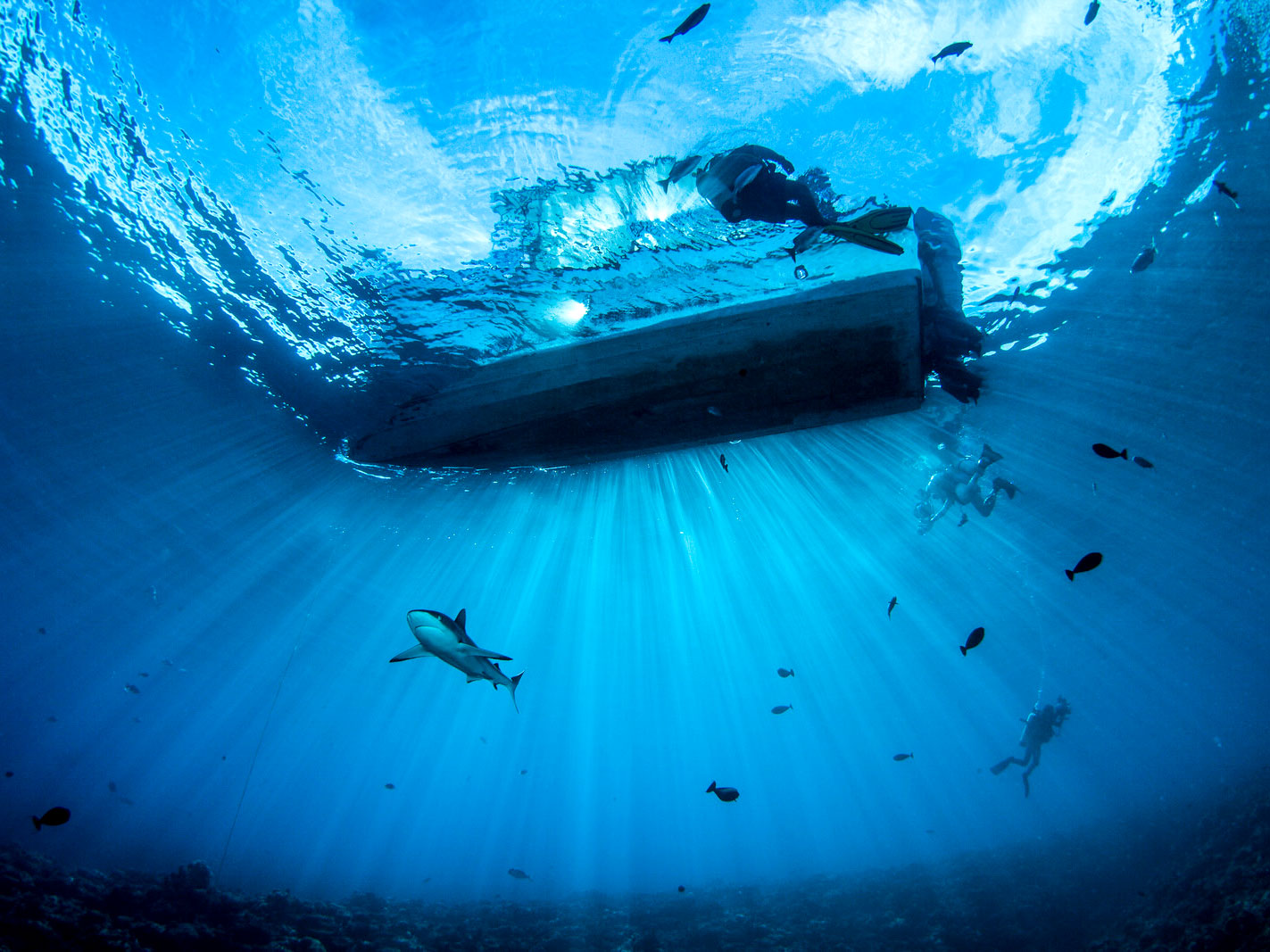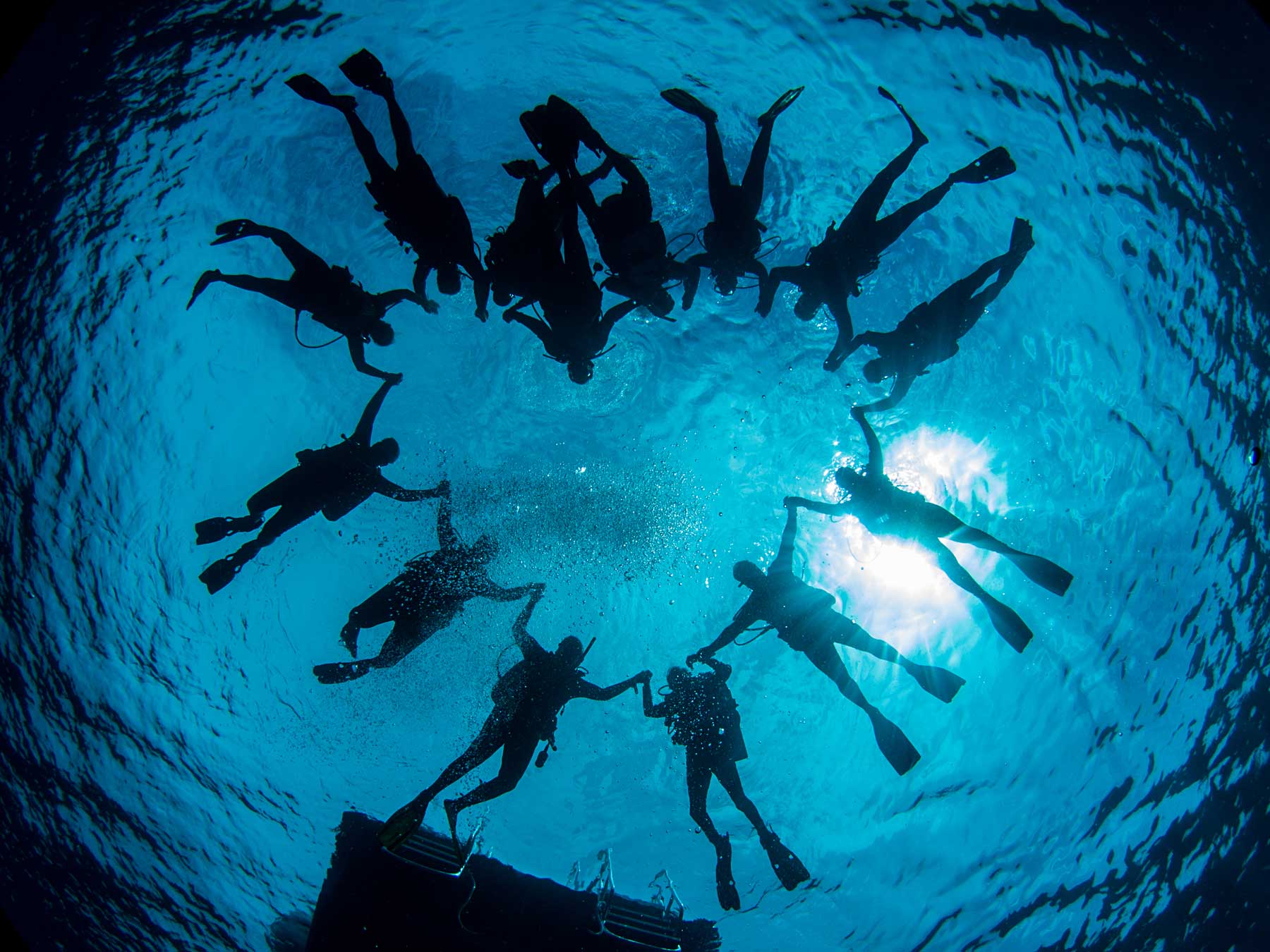On the path to more creative photography, this technique is for many a first step. It involves forcing the camera only expose for the flash. The opposite of balanced lighting.
Where
Indonesia, Australia most famously, but small Seahorses can be found in many Oceans.
DSLR + Mirrorless
ISO: 100 to 200
Mode: Manual camera; TTL strobes; Spot metering and spot focus can be hepful
Aperture: f/16 to f/22; small apertures (larger numbers) are helpful here
Shutter Speed: 1/125 to 1/160
Lens: 60mm Macro on a crop sensor (APS-C or micro four-thirds); Canon 100mm Macro, Sony 90mm Macro, or Nikon 105mm Macro on full frame cameras
Point + Shoot
ISO: 100 or the lowest your mode will allow
Mode: M Manual or Av Aperture Priority; choose Macro focus mode if available
Aperture: The smallest possible aperture (largest number) for maximum depth-of-field
Shutter Speed: 1/125 to 1/250
Focal Length: Macro mode, Microscope mode (Olympus Tough TG-series), or close-up range

Pygmy seahorses are shy and will often turn away from your camera. The Bargibante Pygmies on the left are the most famous and some of the largest, up to twice the size of some varieties. The Denise Pygmy Seahorse on the right is one of the most difficult to shoot because it is so tiny. Avoid shining bright lights on them and back off a little bit. It is recommended to limit the number of flash photos you take.
Technique
We are shooting an animal about a half inch long (13mm). Getting close, and even using external wet macro lenses, will make your subject larger in the frame.
The first issue is that they are very shy and will turn away from the camera, particularly if using a constant-on light source. Many resorts will impose a limit of four shots with flash to avoid stress on the seahorse.
The second issue is that they are so small it is often hard to find them without a dive guide pointing them out. A popular technique is to have your guide (or buddy) point to the animal with a pointer several inches away so when you search you can follow the point until you see the seahorse. This can sometimes be done from the opposite side of the sea fans they often live on.
To have the least impact on your subject, consider shooting a bit farther than your minimum distance and crop later. Depending on your camera's sensor size the image can still be amazing. You'll have less chance of stressing them, and a better chance of getting eye contact.

Tiny pygmy seahorse on red whip coral. Pygmy seahorses were first discovered not so long ago, and now the varieties are amazing- at least 6 different types have been spotted at Wakatobi Resort in Indonesia. Between the size and the camouflaging it's extremely difficult to pinpoint focus on the subject's eye.
Strobes
Assuming you are shooting up at your subject, strobe placement is pretty flexible. After the capture, check to see if your light is hitting anything you didn't notice when you set up. Sometimes repositioning one of the strobes can solve this without changing the light on the subject. TTL will work perfectly for this as long as your subject occupies a reasonable amount of the frame. Using the spot metering system of the camera can be helpful for accurate exposure.
Additional Reading
Super Macro Underwater Photography Techniques
Close Focus Wide Angle In Depth
Macro Close-Up Underwater Camera Settings













